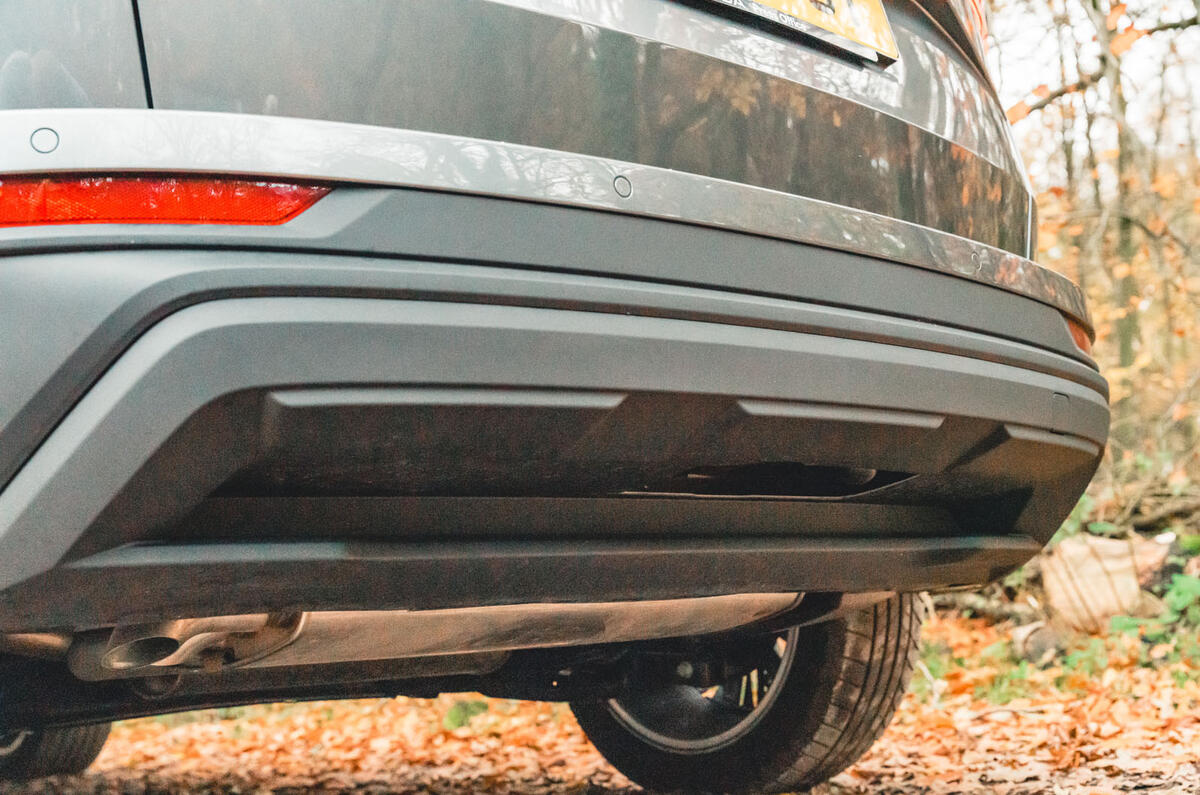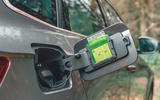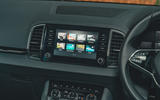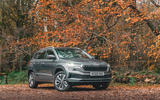The Skoda Karoq is small by crossover hatchback standards on overall length, but the car’s wheelbase isn’t. That’s the first clue that Skoda aimed to make well-packaged practicality and versatility key strengths for this car – and it has achieved that aim very well indeed.
To look at the Karoq from the outside is to worry slightly if it’s another of those downsized pseudo-SUVs that isn’t really any more spacious or convenient than a conventional compact family car. But to sit in each of its rows of seating, to interrogate the ways in which those seats adapt and move, and to discover the car’s many distinguishing storage and convenience features is to be very pleasantly confounded.
The car doesn’t have the most high-rised, jacked-up body, but it does have reasonably high-set seats and plenty of head room. Its driving position improves the more willing you are to crank up the seat cushion and sit increasingly bent-legged – and that also benefits visibility, of course.
In the second row, large adults will find adequate head and leg room, good under-thigh support, and plenty of foot space under the front seats.
SE L specification delivers Skoda’s Varioflex back seats as standard (all three of which tilt and fold individually, and can also be removed completely, one by one or all together), and they add considerable carrying versatility to the Karoq’s armoury.
Take all three back seats out and there’s room for more than 1800 litres of cargo, which is genuine van-like outright capacity. Leave them in, however, and your second-row passengers enjoy picnic tables, with built-in cupholders, that fold out of the seatback in front; tablet holders that can retain a device at eye level, attached to the front headrest anchorages; good-sized door bins; a 12V power supply at the base of the centre console; and even, in the case of our test car, optional heated rear seats.
In the boot, you’ll find several separate storage cubbies to contain smaller loose items, as well as a pair of sliding storage hooks mounted on rails on each side of the cargo bay just below window-line height. The latter are very handy indeed for securing smaller bags. There’s also Skoda’s customary removable boot light-cum-torch, as well as a load bay cover that, being secured to the bootlid rather than the boot sides when closed, is never in your way when loading or unloading.
Among other ‘simply clever’ functional inclusions is an ice scraper for the windscreen carried inside the fuel flap; an umbrella you’ll find under the passenger seat; and, as an option, a powered tailgate that’s clever enough to recognise a downward tug as a sign that it should motor close rather than fight to stay open.
They complete a picture of thoroughly attentive practicality for the Karoq the likes of which few cars in its class can really approach.
Skoda Karoq multimedia
Skoda offers three touchscreen infotainment systems across the Karoq range. Entry-level cars get an 8.0in Amundsen system as standard. This comes without gesture control (which we don’t much like anyway) but retains knobs for volume and map zoom (which we do like – and which is missing from the top-of-the-line Columbus system). It looks good and is easy to use.
The Amundsen system includes navigation as standard, and you can add Virtual Cockpit digital instruments and wireless device charging by upgrading the Amundsen Plus system (£640). The squarish-aspect screen is easily big enough to relay mapping at useful scale and in detail, and the system is easy to program and to follow. Generally, it accepts a voice-commanded destination at the first time of asking.

Upgrading to the 9.2in Columbus system costs £1485 on mid-spec SE L cars (or £900 on an upper-level Sportline), and it comes with 64GB of on-board flash memory, DVD playback, 4G data connectivity, a wireless hotspot and music streaming.




































































